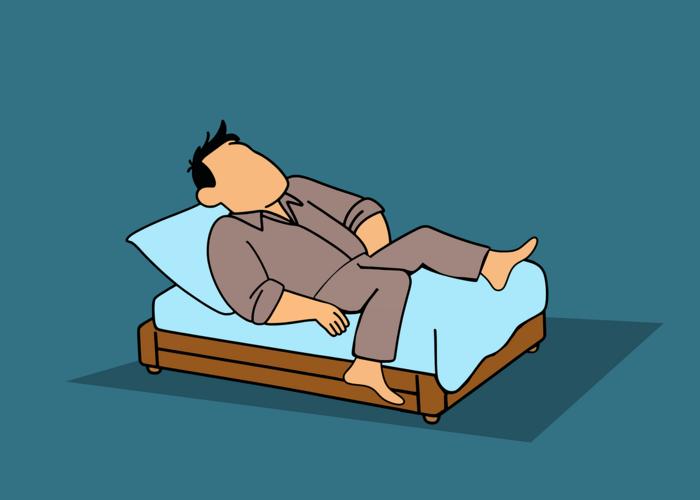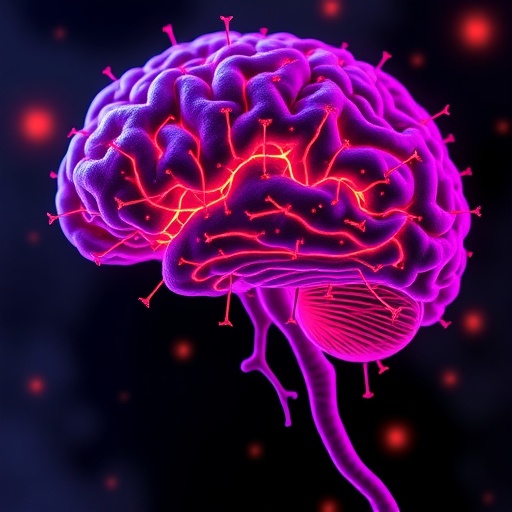
In recent years, the digital world has witnessed a surge in health and wellness trends promoted heavily through social media platforms. Among these trends, nighttime mouth taping has emerged as a popular method purported to treat mouth breathing and the spectrum of sleep-disordered breathing conditions, including obstructive sleep apnea (OSA). This practice involves sealing the lips shut during sleep with adhesive tape or using devices such as chin straps in an effort to force nasal breathing and ostensibly improve sleep quality. However, new research systematically reviewing existing evidence casts significant doubt on the safety and efficacy of this fast-growing trend, warning of potential serious health risks.
Mouth breathing during sleep is not uncommon, especially when the nasal airflow is compromised due to congestion, anatomical abnormalities, or chronic inflammatory conditions. Habitual mouth breathing has been implicated in worsened sleep quality and the development of sleep-disordered breathing – a range of disorders that encompasses snoring, upper airway resistance syndrome, and OSA. Obstructive sleep apnea is characterized by repeated complete or partial blockage of the upper airway during sleep, leading to intermittent hypoxia and fragmented sleep architecture. These disruptions have wide-reaching health consequences, ranging from cardiovascular disease to impaired cognitive function.
The concept behind mouth taping is straightforward: by physically preventing the mouth from opening during sleep, nasal breathing is encouraged or enforced, theoretically reducing the incidence of apneas or hypopneas associated with oral airflow. This hypothesis has attracted considerable attention across social media channels, particularly among influencers and celebrities endorsing mouth taping as a simple and natural remedy. Despite its popularity and anecdotal endorsements, the scientific community has yet to converge on a consensus about its therapeutic benefit or safety profile.
To elucidate the state of knowledge, Dr. Brian Rotenberg and colleagues at Western University in Canada conducted a systematic review collating data from 10 previously published studies that investigated the effects of nighttime mouth taping on patients experiencing mouth breathing and sleep-disordered breathing. These studies collectively involved 213 patients and incorporated a variety of methodologies, including clinical trials, observational studies, and pilot investigations. The review critically assesses the evidence of benefit in relation to objective sleep parameters as well as the associated risks.
Among the analyzed studies, only two demonstrated a modest benefit of mouth taping, specifically in patients with mild obstructive sleep apnea. These studies reported slight improvements in the apnea-hypopnea index (AHI), a clinical metric quantifying the number of apnea and hypopnea events per hour of sleep, which serves as a standard measure of sleep apnea severity. Notably, these findings were limited to small subgroups and lacked consistency across different patient populations or study designs, preventing generalized conclusions.
Conversely, the majority of the studies yielded no significant evidence that the practice ameliorates mouth breathing, sleep-disordered breathing, or obstructive sleep apnea symptoms. Some investigations even suggested neutral or negligible changes in sleep outcomes after mouth taping, challenging the notion that physically sealing the mouth translates into clinical improvement. These discrepancies highlight the heterogeneity of study designs and patient characteristics, undermining the establishment of a clear therapeutic recommendation.
Perhaps of greater concern than the ambiguous efficacy is the identification of potential serious risks associated with mouth taping. Four of the ten studies explicitly discussed the danger of asphyxiation, particularly in individuals whose nasal airways are obstructed due to chronic rhinitis, deviated septum, sinonasal disease, enlarged tonsils, or allergic conditions like hay fever. For these populations, forced oral closure could critically impair their ability to breathe during sleep, raising the specter of suffocation or severe hypoxemia, which can have life-threatening consequences.
From a physiological standpoint, the nasal passages serve crucial functions beyond mere airflow, including air humidification, filtration, and temperature regulation. Nasal breathing also promotes nitric oxide production, which has important vasodilatory effects and contributes to overall respiratory health. The enforced mouth closure without considering nasal patency not only neglects these benefits but risks exacerbating ventilation-perfusion mismatches during sleep, particularly in vulnerable individuals.
Given the paucity of robust evidence supporting nighttime mouth taping and the documented safety concerns, Dr. Rotenberg and his team advocate caution. Their systematic review concludes that there is currently no scientific justification to endorse this trend as a viable therapeutic intervention for sleep-disordered breathing, including obstructive sleep apnea. The authors emphasize the critical need for rigorous, well-designed randomized controlled trials with larger sample sizes, standardized protocols, and long-term follow-up to clarify the risks and benefits of mouth taping.
This review also underscores broader issues surrounding the dissemination of health-related information via social media. Mouth taping’s ascendancy is largely attributed to celebrity endorsements and viral online content that often lacks scientific validation. Such endorsements risk misleading the public and encouraging potentially harmful self-treatment behaviors. The medical community faces the ongoing challenge of countering misinformation and providing evidence-based guidance within a rapidly evolving digital landscape.
The researchers caution that mouth taping is not universally appropriate; in some cases, it might precipitate serious harm. Health practitioners need to screen patients carefully for nasal obstructions and other contraindications before considering any form of oral taping or similar interventions in managing sleep-disordered breathing. Until definitive research is available, reliance on established clinical therapies such as continuous positive airway pressure (CPAP), positional therapy, weight management, and, when indicated, surgical interventions remains paramount.
In light of their findings, the authors encourage the public and clinicians alike to approach such contemporary trends with critical scrutiny. The perception that simple, do-it-yourself solutions can replace complex medical diagnoses and management strategies risks overshadowing the importance of professional evaluation. Safe and effective treatment of sleep-disordered breathing requires a nuanced understanding of the underlying pathophysiology tailored to individual patient needs.
As the connection between sleep, respiratory physiology, and systemic health continues to be elucidated, this study serves as a timely reminder of the perils of adopting unproven medical fads. It highlights the necessity for continued scientific inquiry, education, and communication efforts to ensure that innovations in sleep medicine are grounded in empirical evidence rather than social media hype or anecdotal reports. The clinical community, patients, and the public must navigate these waters cautiously, prioritizing safety and efficacy to improve sleep health outcomes globally.
Subject of Research: People
Article Title: Breaking social media fads and uncovering the safety and efficacy of mouth taping in patients with mouth breathing, sleep disordered breathing, or obstructive sleep apnea: A systematic review
News Publication Date: 21-May-2025
Web References: http://dx.doi.org/10.1371/journal.pone.0323643
References: Rhee J, Iansavitchene A, Mannala S, Graham ME, Rotenberg B (2025) Breaking social media fads and uncovering the safety and efficacy of mouth taping in patients with mouth breathing, sleep disordered breathing, or obstructive sleep apnea: A systematic review. PLoS One 20(5): e0323643.
Image Credits: Mohamed_hassan, Pixabay, CC0
Keywords: mouth taping, sleep-disordered breathing, obstructive sleep apnea, apnea-hypopnea index, nasal obstruction, asphyxiation risk, systematic review, social media health trends, respiratory physiology
Tags: adhesive tape for sleepchin straps for mouth breathingchronic inflammation and sleep issuesevidence on mouth taping safetyhealth implications of mouth breathingmouth breathing health risksnasal breathing benefitsnighttime mouth tapingobstructive sleep apnea concernssleep quality improvement methodssleep-disordered breathing trendssocial media health trends




